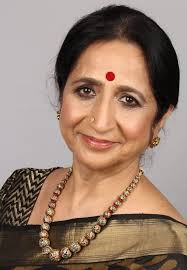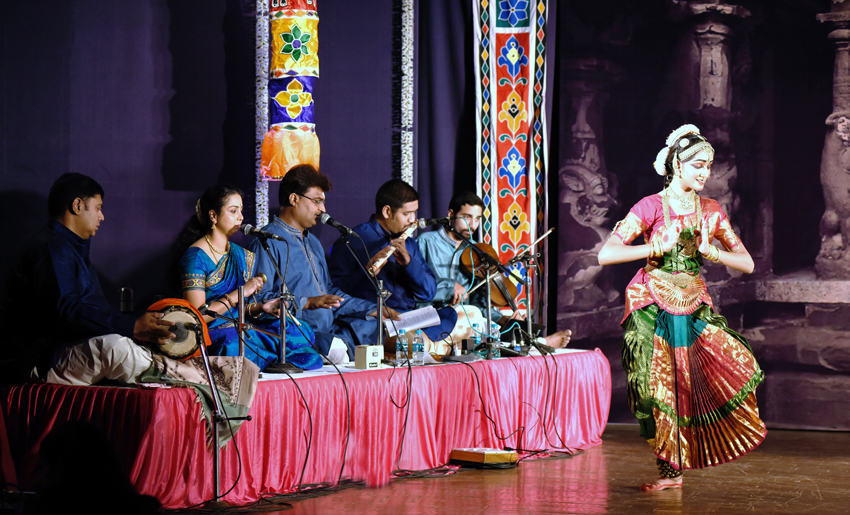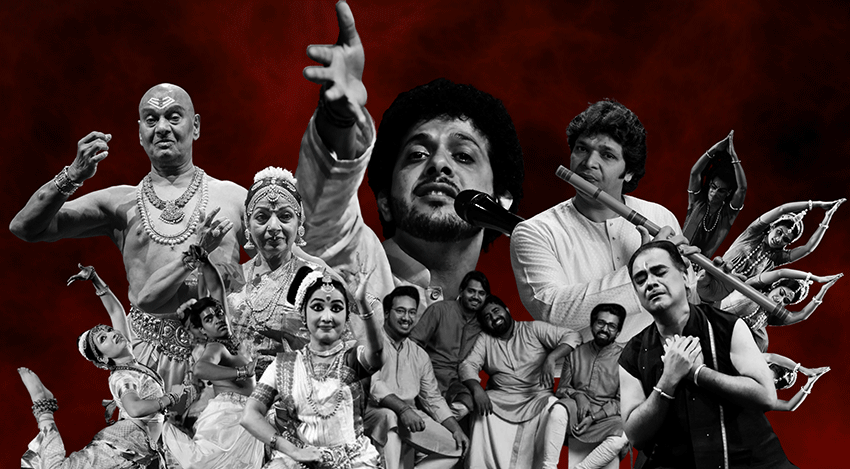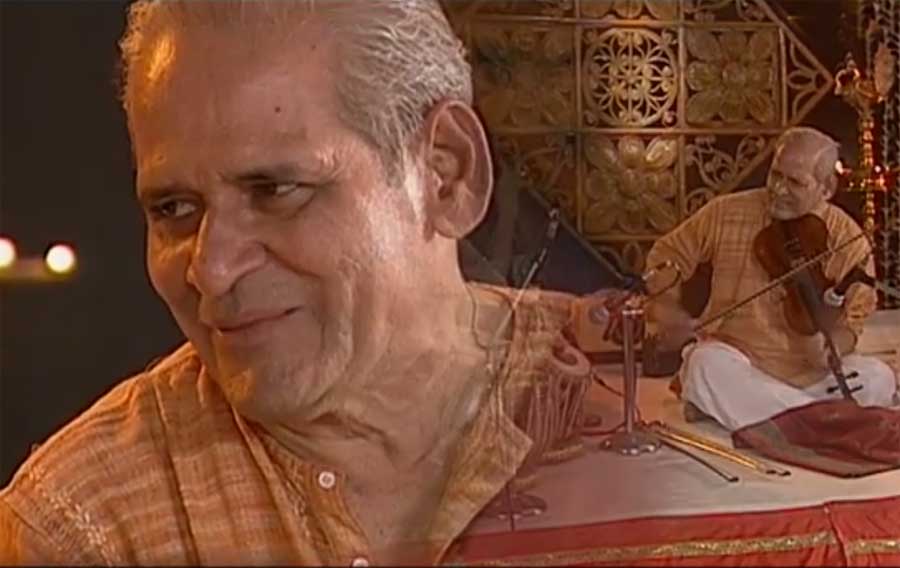Dance is an artistic way of expressing one’s feelings and emotions. It carves one into a complete disciplined individual.
Nattuvangam, an art of complex calculation of beats and hand work with the help of cymbals to assist the dancer and control the orchestra music. In many ways, this can be compared and is equivalent to the conductor of a symphony orchestra. I, being an exponent in the field of nattuvangam, share my experiences in the field of Indian Classical Music.
 Indian classical music represents a credible position and style over a long period of time. Since the end of the British rule and decline of the royal patronage, Indian classical musicians had to struggle for their bread along with the responsibility of carrying forward their lineage of the tradition. However, with the changing socio-economic realities, the influence of Indian classical music in the west, the emerging critical voices among contemporary Indian students, the new conditions and contexts have led to many challenges faced by the musicians. The rapid technological up gradation in last two decades has given a new shape to the music in India. Technological innovations have certainly influenced classical music and have resulted in:
Indian classical music represents a credible position and style over a long period of time. Since the end of the British rule and decline of the royal patronage, Indian classical musicians had to struggle for their bread along with the responsibility of carrying forward their lineage of the tradition. However, with the changing socio-economic realities, the influence of Indian classical music in the west, the emerging critical voices among contemporary Indian students, the new conditions and contexts have led to many challenges faced by the musicians. The rapid technological up gradation in last two decades has given a new shape to the music in India. Technological innovations have certainly influenced classical music and have resulted in:
- Up-gradation of recording/archiving technology
- Virtual music classes
- Online shopping & availability of music and musical instruments
- Digitization of music/ musical instruments
We have of course had some phenomenal musicians perform worldwide enthralling audiences. However, Indian classical musicians always have had difficulty in establishing and making an impact worldwide. If you would roughly count the percentage of Indian classical musicians against other western classical musicians performing worldwide, it would easily fall out.
Some considerations while choosing Indian classical musicians to perform internationally are:-
- The number of musical performances to their credit.
- The funds that the performer can generate and organizer make.
- Popularity and fame of artist in India and abroad.
- The acceptance of a music form which isn’t very popularly known.
[adrotate group=”9″]
The focus here isn’t about the top elite well-established artists, but about the budding upcoming artistes who struggle to get a firm footing. Musicians aren’t necessarily influenced by the music that they create/recite but also have to look after various other factors such as;
- Touring is extremely expensive. This primarily comes from the exchange rates, living costs and travel costs.
- Marketing and launching oneself is very important to maintain a position in the international market. Just being an excellent musician is not enough in this commercial world.
- Indian Classical music comes with a strict cultural package – No playing in bars, No street music. As the taboo is very strong any dramatic attempt will surely have a long-term negative impact.
- Language as a barrier. Though there is a popular proverb that “Music doesn’t have any language barrier”, but the impact of lyrical meaning is completely lost.
- Indian classical music is predominantly based on Hindu/Indian mythology. Therefore the understanding of this depiction through music wouldn’t be easily understood internationally.
- Performance patterns need lots of adjustments. Such as having to travel halfway across the globe for a few minutes of performance. That is indeed a challenge to the artist who has to make their performances worth listening maintaining both the technicality with the emotional or aesthetic facet in a very little span of time.
Some possible solutions to the challenges faced are:
- Recording locally and releasing via social media. This not only reduces the cost and an effort, but the technology also makes budding artists to market and launch themselves to a wider audience.
- For marketing, the musicians need an advertisement which has become very much essential for an artist to exist. Almost every musician of today has an official website with their musical profile, audio/video. They are actively being followed on Facebook, Instagram, YouTube and other social network mediums.
- While playing at a bar may be too bold an approach. One shouldn’t be shy at alternate methods. Ex: – Opening with an Indian classical piece at a heavy metal concert or rock concert.
- Can the songs be explained in a local language? Can there be pamphlets printed or Whatsapped prior to the concert that the audience is able to engage in an active fashion?
- The musician has to adapt and invent outside Hindu mythology to move to subjects of nature. Ex:- five elements of nature, mothers love, health or socio-economic issues
- Group performances and Jugalbandhis. These increases the chances, optimizes the costs and also provides larger exposure to the musicians. Rendering lecture demonstrations in between a long concert is always an effective way of engaging the audience.

Aruna Sairam, Vice-Chairperson, Sangeet Natak Akademi, and an established Carnatic vocalist says, “There is no consistent talent search going on. ‘Isne bol diya, usne bol diya’, it is all word of mouth recommendation. That means if you are connected, you get to be selected. All the teachers of Carnatic music and the institutions should simultaneously search for fresh talent.”
Deepti Navaratna, Executive Director of the Indira Gandhi National Council for Arts (IGNCA), Southern Region says “Empowering young musicians to present their music in new spaces places and for new demographics other than sabha-going audiences is possible. One can think of steady year-long, low resource, high-community engagement events which are not part of a three or four-day extravaganza with high money stakes. A new kind of creative programming mind-set can be helpful. Presenters could think creatively about curating new music engagement experiences with youngsters, away from conventional concert experiences, for both performer and listener.”
[adrotate group=”9″]
While there is an attempt to provide specific solutions to most issues, costs continue to be a key concern to many Indian musicians trying to establish themselves in an international circuit. To perform at the bigger festivals abroad, the musicians need to go through agents; Younger artists cannot afford to have agents who act as a commission middleman between the organizer and an artist. Due to lack of formal contracts between artists and organizers, puts artists in serious difficulty. Often, organizers would vanish after performances, without paying dues or clearing hotel and travel bills. Overseas tours still remain an adventure for Indian classical musicians, though there have been some changes for the better. For example, you cannot get a visa to perform in some countries without proving that you have adequate insurance cover. There is still a need to professionalize other terms and conditions: work hours, hospitality and accommodation, payment schedules, contracts and agreements.
Music, being one of the indivisible aspects of society, it cannot devoid itself from the changing realities of the time. The listeners and artists, young and old, need to tell the old story of mathematical execution and the old story of bhakti in a fresh and engaging way. There should be a blend and maintain a balance between trend and the tradition.
[adrotate group=”9″]
Conclusion
While the challenges have been debated at length, the possible solutions for a budding Indian classical musician to perform internationally are also presented. Some of the practical scenarios are presented as challenges which need to be overcome for a successful career. The support from organizations such as the International Music Council, UNESCO or any such organizations isn’t covered. Some of the solutions presented are surely worth trials as the investments are very low. The author is very happy to share detailed experiences and contacts necessary to make a successful attempt for any classical musician interested in launching a career internationally.
Though music transcends language, culture and time, and though notes are the same, Indian music is unique because it is evolved, sophisticated and melodies are defined – Sage Dayananda Saraswati











1 thought on “Challenges and ways ahead for Indian Classical Musicians to go International”
I spoke to a lot of classical musicians from both South and North India on this topic. There is often a resistance to change and experimentation with presentation formats due to fear of rejection from their fraternity. On the other hand I’ve also seen musicians who are allergic to any deviation from traditional presentation format, partly due to prejudice and partly due to their inability to innovate.